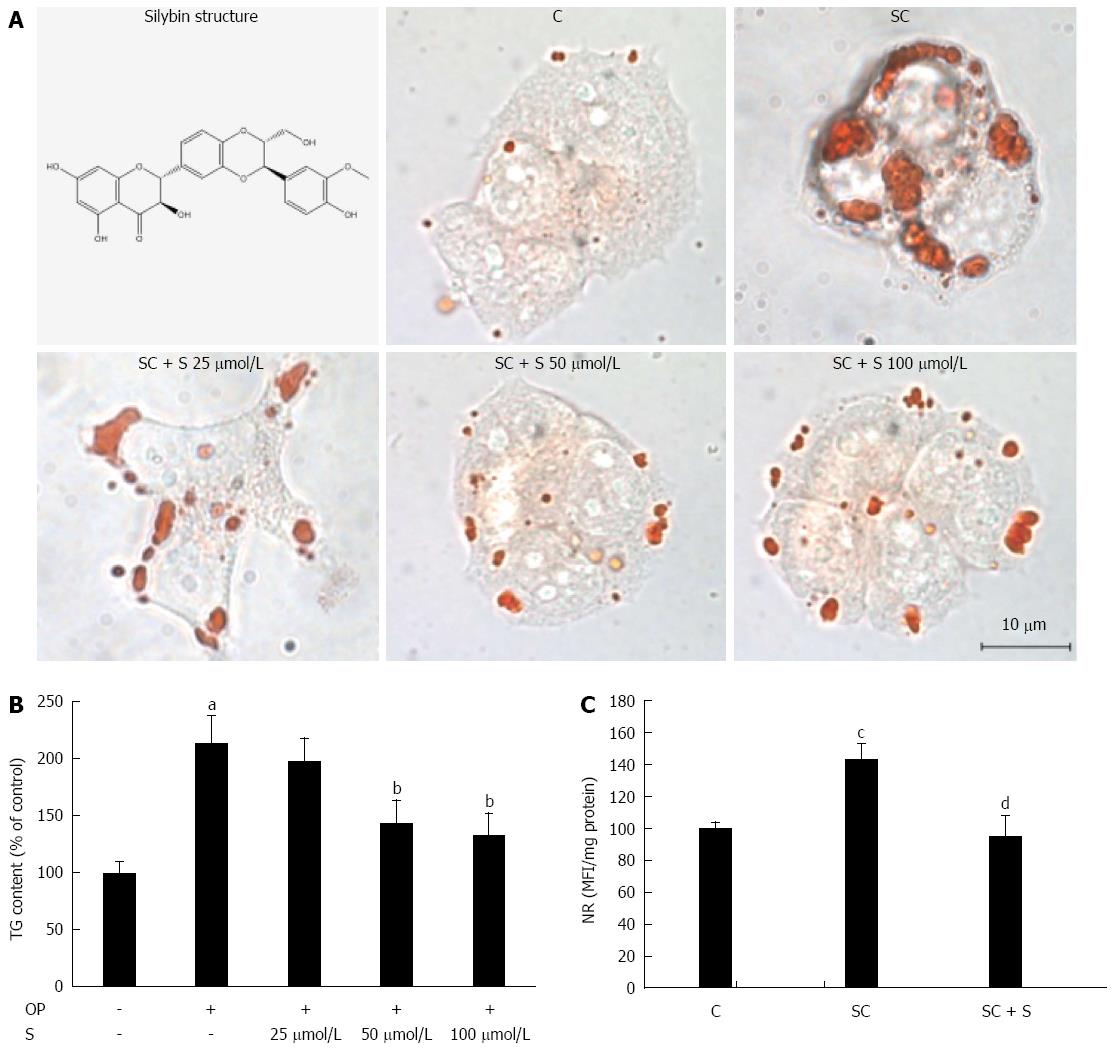Copyright
©The Author(s) 2016.
World J Gastroenterol. Jul 14, 2016; 22(26): 6016-6026
Published online Jul 14, 2016. doi: 10.3748/wjg.v22.i26.6016
Published online Jul 14, 2016. doi: 10.3748/wjg.v22.i26.6016
Figure 1 Lipid-lowering effects of silybin in steatotic FaO cells.
A: Neutral lipids were visualized in situ by ORO-staining in control (C) and steatotic FaO cells incubated in the absence (SC) or in the presence (SC + S) of the silybin at different doses (silybin 25; 50; 100 μmol/L) (magnification × 40; Bar: 10 μm). Silybin structure is also shown; B: On the same samples TG content was quantified by spectrophotometric assay; data are expressed as percent TG content relative to control and normalized for total proteins; C: LD accumulation was evaluated by NR-staining in control and steatotic FaO cells incubated in the absence or in the presence of 50 μmol/L silybin; data are expressed as percent mean fluorescence intensity (MFI) relative to control and normalized for total proteins. Values are mean ± SD from a least three independent experiments. ANOVA followed by Tukey’s test was used to assess the statistical significance between groups. Significant differences are denoted by symbols: aP≤0.001, cP≤0.01 C vs OP and bP≤ 0.001, dP≤ 0.01 OP vs silybin.
- Citation: Vecchione G, Grasselli E, Voci A, Baldini F, Grattagliano I, Wang DQ, Portincasa P, Vergani L. Silybin counteracts lipid excess and oxidative stress in cultured steatotic hepatic cells. World J Gastroenterol 2016; 22(26): 6016-6026
- URL: https://www.wjgnet.com/1007-9327/full/v22/i26/6016.htm
- DOI: https://dx.doi.org/10.3748/wjg.v22.i26.6016









